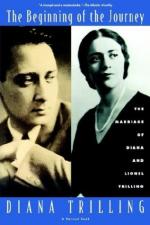|
This section contains 5,220 words (approx. 18 pages at 300 words per page) |

|
It was common for critics to maintain, during the years in which Trilling wrote his major books, that the relation between the individual artist and society was a relation between virtue and vice, or at least a relation between the highest aesthetic purity and the worst conditions which an indifferent society would impose upon a pure intention. Society was deemed to be a bourgeois conspiracy of the worst to thwart the best: the artist was regarded as a holy man in the degree of his victimage. Artist and critic were supposed to huddle together for comfort in the storm, since their motives were equally noble. The storm was a monster compounded of money and aggression.
Trilling was never persuaded by these common assumptions, and he turned their rhetoric upside down. I do not imply that he put his talent at the disposal of a mass society or that...
|
This section contains 5,220 words (approx. 18 pages at 300 words per page) |

|


